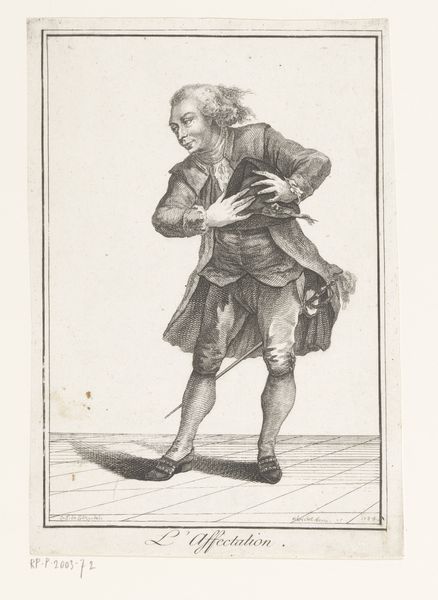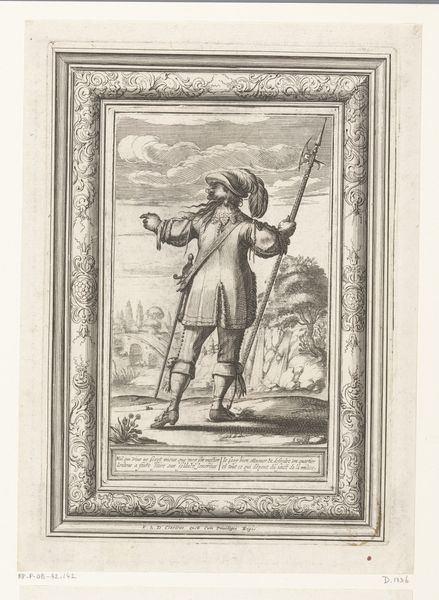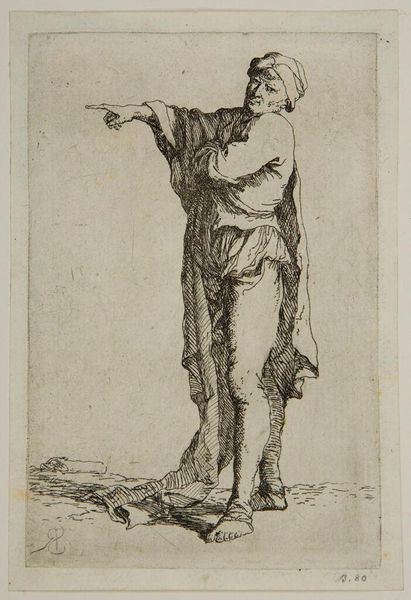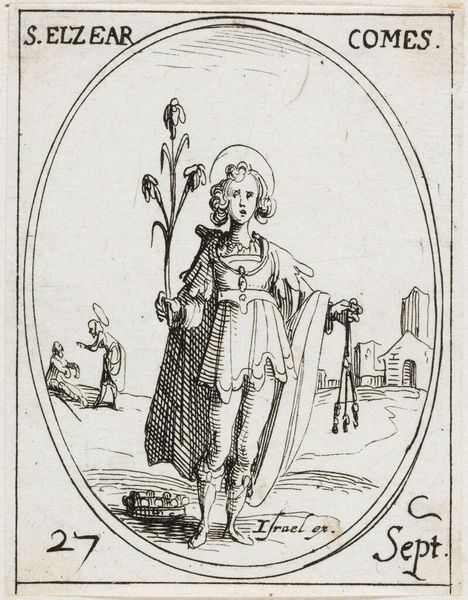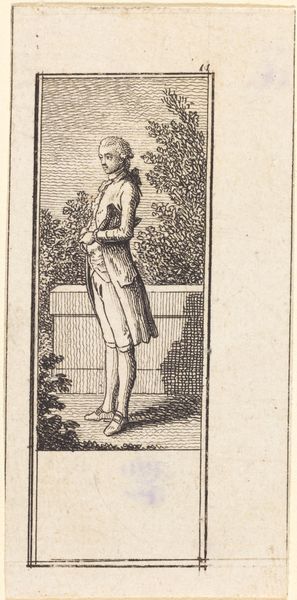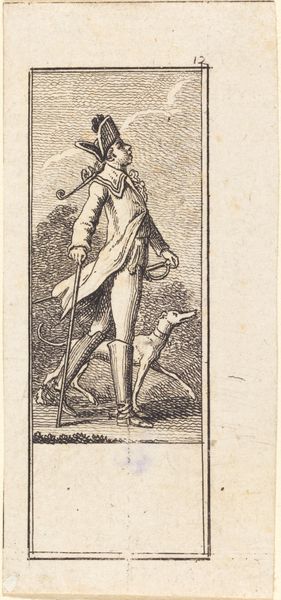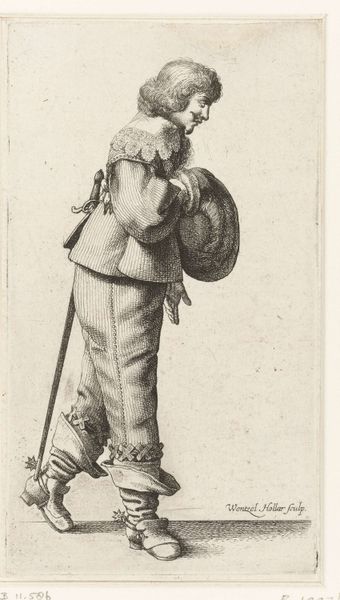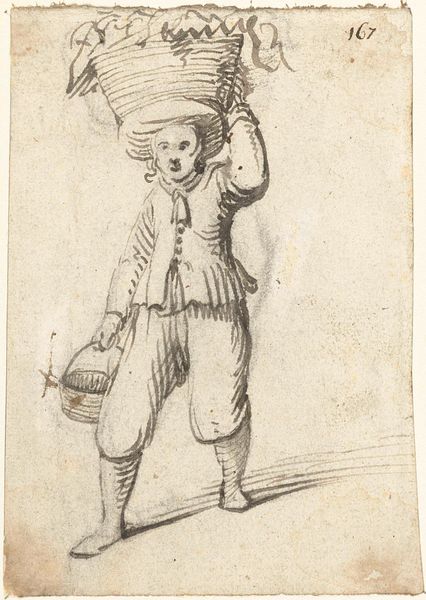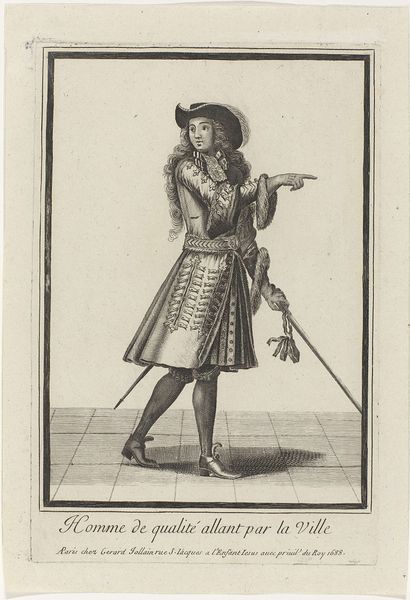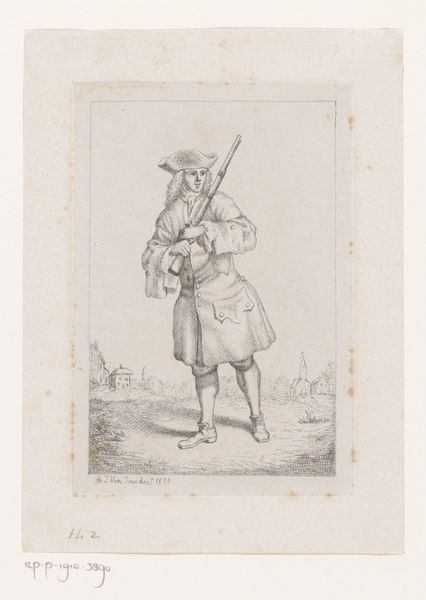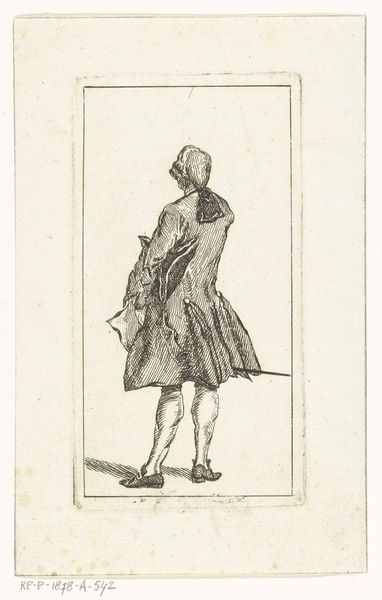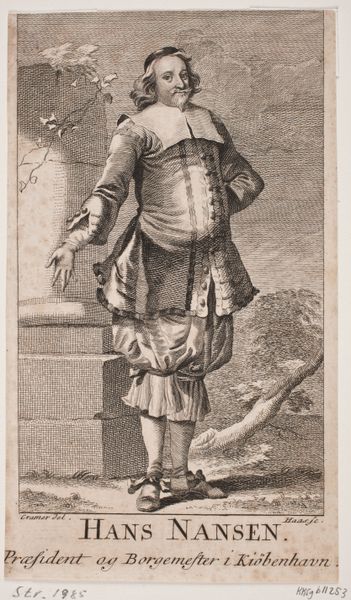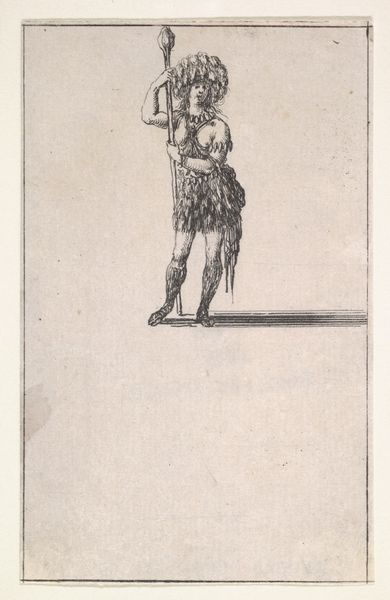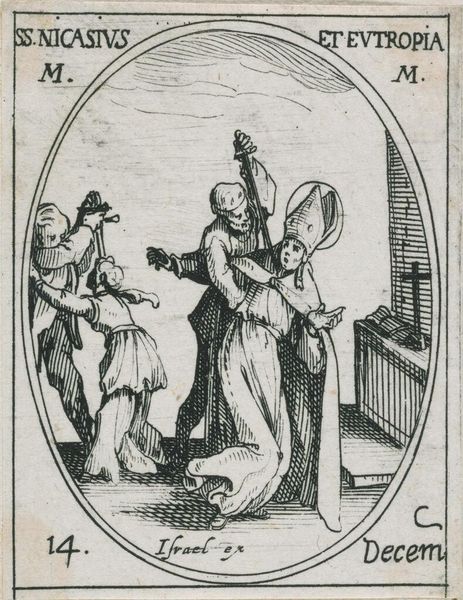
drawing, paper, ink
#
drawing
#
allegory
#
baroque
#
pen drawing
#
figuration
#
paper
#
ink
Dimensions: height 73 mm, width 107 mm
Copyright: Rijks Museum: Open Domain
Curator: Here we have Frederik Ottens's "Invidia in een medaillon", a drawing from circa 1700 to 1749. It resides here in the Rijksmuseum. Editor: Oh, wow. First impression? Disturbed, deeply uneasy. That figure… it’s almost like they’re devouring themselves from the inside. Twisted. Curator: Indeed. Executed in ink on paper, the process involves delicate layering to define both the central figure and the intricate details of the surrounding medallion, drawing clear links between traditional forms of drawing and its function. The lines emphasize movement and decay. This method underscores how Ottens aimed to not only depict the subject, Envy, but also reflect on its destructive, eroding nature. Editor: I see that…like Envy consuming itself. The snake motif writhing around the border adds to the claustrophobic, trapped sensation, right? You have this allegorical figure, seemingly caught in a moment of self-inflicted agony. Is it common to portray envy this viscerally? Curator: Seventeenth-century Dutch art certainly explored the darker aspects of human nature. Representations of vices were extremely prevalent. Ottens builds upon these historical narratives using materials readily available to printmakers, engaging directly with systems of representation through accessible media. The relative cost of drawings also allowed broader distribution of philosophical and moral subjects, especially to printmakers in Holland. Editor: The fact that it’s a drawing, somehow, intensifies it. Like seeing a raw nerve exposed. It's a study in black and white, without color softening anything, pushing the message directly in your face. Curator: Right, it avoids idealization completely, doesn't it? I mean, there is the baroque ornamentalism with all the acanthus leaves and snakes, but then within that stylized framework, it captures something really quite disturbing about jealousy. Editor: It does make you wonder about the artist's state of mind when he conceived this. Or maybe about the mindset of the period itself, about people believing they would go to hell if they let the worst impulses take over. Curator: Exactly. What Ottens’ artistic output contributes to is that dialogue surrounding craft and consumption, challenging our notions of the materials involved, forcing viewers to reflect on envy’s place within 17th century social mores. Editor: That internal twisting is unforgettable. Now when I see it, though, there's also something fascinating about this strange mirror being held up. Maybe confronting this head-on can keep those snakes at bay in real life?
Comments
No comments
Be the first to comment and join the conversation on the ultimate creative platform.
